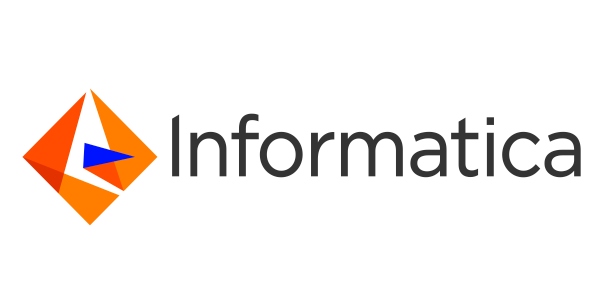SAP API Management
Filter By
Browse By
- SAP Analytics and AI
- SAP Application Development and Integration
- All SAP Application Development and Integration
- SAP ABAP
- SAP ABAP Development Tools
- SAP ABAP Test Cockpit
- SAP API Management
- SAP BAPI
- SAP Basis
- SAP BRF
- SAP Business Application Studio
- SAP CMS
- SAP Design Studio
- SAP Development Tools
- SAP DevOps
- SAP EAI
- SAP EDI
- SAP Extension Suite
- SAP Fiori
- SAP Fiori Elements
- SAP Integration Suite
- SAP Low Code Application Development
- SAP Low Code Automation
- SAP Netweaver
- SAP Release Management
- SAP UI5
- SAP Web Application Server
- SAP Web IDE
- SAP Business Process Management
- SAP Center of Excellence
- SAP CIO
- SAP Customer Experience
- SAP Data and Data Management
- All SAP Data and Data Management
- SAP BW
- SAP BW/4HANA
- SAP Crystal Reporting
- SAP Data Archiving
- SAP Data Center
- SAP Data Governance
- SAP Data Integration
- SAP Data Migration
- SAP Data Quality
- SAP Data Services
- SAP Data Strategy
- SAP Data Visualization
- SAP Data Warehouse Cloud
- SAP DMS
- SAP Document Control
- SAP EIM
- SAP ETL
- SAP ETL Tools
- SAP HANA
- SAP HANA Administration
- SAP HANA Deployment Infrastructure
- SAP HANA Studio
- SAP Master Data
- SAP Master Data Governance
- SAP MDM
- SAP Enterprise Architect
- SAP Enterprise Asset Management
- SAP ERP
- SAP Finance
- All SAP Finance
- SAP Accounting
- SAP AR AP
- SAP Asset Accounting
- SAP Billing Systems
- SAP BPC
- SAP BRIM
- SAP Cash Management
- SAP Central Finance
- SAP Controlling
- SAP COPA
- SAP Cost Center Accounting
- SAP e-invoicing
- SAP FICO
- SAP Finance Automation
- SAP Financial Closing Cockpit
- SAP Financial Consolidation
- SAP Financial Planning
- SAP FX Risk
- SAP General Ledger
- SAP Global Tax Management
- SAP Hyperion
- SAP Order to Cash
- SAP Payment Processing
- SAP Profitability Analysis
- SAP Rebate Management
- SAP S/4HANA Finance
- SAP Universal Journal
- SAP Governance Risk and Compliance
- SAP Human Capital Management
- SAP Intelligent Technologies
- SAP Platform and Technology
- All SAP Platform and Technology
- SAP Business Technology Platform
- SAP Cloud Connector
- SAP Cloud Integration Platform
- SAP Cloud Migration
- SAP Cloud Platform
- SAP Cloud Providers
- SAP Cloud Strategy
- SAP Container Platform
- SAP Digital Asset Management
- SAP Digital Integration Hub
- SAP Digital Signature
- SAP HANA Enterprise Cloud
- SAP HEC
- SAP Hyperscalers
- SAP Infrastructure
- SAP Messaging
- SAP Smart Forms
- SAP Quality and Testing
- SAP Security
- SAP Spend Management
- SAP Supply Chain Management
- All SAP Supply Chain Management
- SAP APO
- SAP Asset Management
- SAP Business Network
- SAP Digital Manufacturing Cloud
- SAP Digital Twin
- SAP EWM
- SAP IBP
- SAP Inventory Management
- SAP Label Printing
- SAP Logistics
- SAP Manufacturing
- SAP Manufacturing Automation
- SAP MES
- SAP MII
- SAP MM
- SAP MRO
- SAP MRP
- SAP Order Management
- SAP Plant Maintenance
- SAP PLM
- SAP Production Planning
- SAP S&OP
- SAP SD
- SAP SPM
- SAP Supply Chain Planning
- SAP Track and Trace
- SAP Transportation Management
- SAP System Administration
SAP API Management: A Critical Factor for Digital Transformation
With the torrent of cloud, mobile, and Internet of Things (IoT) technologies, providing business services and information rapidly and securely to internal users, partners in the supply chain, and end customers has become a critical requirement. Yet, it presents a significant challenge — integration across multiple SAP and non-SAP solutions is the most mentioned challenged in several recent SAPInsider research reports, including this SAP Integration Benchmark Report released in fall 2021.
The article The Rise of Integration as a Strategic Imperative outlines the various strategic ways to overcome the integration challenge. A critical factor in a successful integration strategy is API management — the process to develop, publish, promote, and oversee APIs in a secure and scalable environment.
SAP API Management: A Critical Factor for Digital Transformation
With the torrent of cloud, mobile, and Internet of Things (IoT) technologies, providing business services and information rapidly and securely to internal users, partners in the supply chain, and end customers has become a critical requirement. Yet, it presents a significant challenge — integration across multiple SAP and non-SAP solutions is the most mentioned challenged in several recent SAPInsider research reports, including this SAP Integration Benchmark Report released in fall 2021.
The article The Rise of Integration as a Strategic Imperative outlines the various strategic ways to overcome the integration challenge. A critical factor in a successful integration strategy is API management — the process to develop, publish, promote, and oversee APIs in a secure and scalable environment.
SAP has partnered with Cloud Foundry as well as cloud hyperscalers such as Amazon Web Services (AWS) and Microsoft Azure to run the SAP API management service. James Wood, Principal Consultant with Bowdark Consulting, explains the intricacies of the Cloud Foundry environment in this article. With Cloud Foundry, developers can build just about anything, from SAP Fiori apps with SAPUI5 to apps and APIs built on Node.js, Java, Python, and so forth.
Based on the open-source application platform managed by the Cloud Foundry Foundation, SAP API Management can be used to enhance SAP products and to integrate business applications. It can also be used to develop entirely new enterprise applications based on business APIs that are hosted on SAP Business Technology Platform and integrated with SAP HANA extended application services.
With so many users, devices, and applications accessing business transactions and information, SAP API Management provides a single provisioning platform to provide central access and governance across a hybrid landscape.
The API Management infrastructure consists of five components:
- API runtime allows users and applications to deploy and productively use available APIs.
- API portal is a one-stop-shop to create, secure, and publish API proxies. API users can search for and discover APIs, and API administrators can manage, meter, and secure APIs, as well as define and publish rate plans.
- API business hub enterprise is a self-service for application developers to discover, browse, and explore APIs, subscribe to rate plans, and build apps.
- API analytics provides powerful analytical tools to track API usage.
- API designer can define, implement, and document APIs.
On-premise and cloud platforms and databases can call the APIs through REST, OData and SOAP frameworks.
Apart from SAP, integration platforms from vendors such as Boomi, SUSE, TIBCO, and Stonebranch also provide automation and intelligence to make API management more manageable.
402 results
-

Technical Guide: Transitioning to SAP Cloud Platform Integration Suite
Reading time: 15 mins
Seamless integration across applications and systems — whether they are SAP, non-SAP, on-premise, cloud, or hyperscaler systems — enable organizations to digitalize their end-to-end processes and make the enterprise more connected and intelligent. Forward-thinking organizations are taking a holistic and strategic approach to their enterprise integration initiatives as they pursue digital transformation, embracing the agility…
-

 Premium
Premium
Financial Data Migration Tips and Tricks
Reading time: 15 mins
ManagementLearn functional and technical tips for migrating data as part of a business consolidation strategy. Key Concept Data migration may involve moving data from a legacy SAP system to another SAP system or transferring data entered under one company code to another company code. Another type of data migration involves merging data pertaining to two…...…
-

 Premium
Premium
8 Lessons Learned from an SAP CRM 2005 Data Migration Project
Reading time: 15 mins
Find out how to improve data load performance when you use the Business Application Programming Interface approach to migrate business partner data and its marketing attributes, roles, contact information, and external IDs from a legacy application into SAP CRM 2005. Learn the key items to watch out for during this cut-over activity and how to…...…
-
-

- SAP BRF
 Premium
Premium
Understand and Extend SAP Access Control 10.0 Approval Workflow
Reading time: 30 mins
SAP Access Control 10.0 uses a Multistage, Multipath (MSMP) workflow engine (an enhancement of SAP Business Workflow) to achieve a flexible configuration process for approval workflows needed for SAP Access Control business functionality. Because of the huge customer base of SAP Access Control, the MSMP workflow engine was developed to be robust and flexible to…...…
-

How a Digital Integration Hub Is a Business Game-Changer in the Experience Economy
Reading time: 12 mins
Every SAP customer is concerned with ways to safeguard and optimize their many different sources of revenue. When rapidly evolving business environments are thrown into the mix, how can these organizations stay best informed to know that all the systems contributing to the revenue stream are communicating and integrating data properly? SAP recommends companies consider…
-

- SAP Cloud Platform
 Premium
Premium
Intelligent Supply Chain Management with SAP Cloud Platform
Reading time: 20 mins
Learn how to optimize your supply chain management process using cloud services from SAP Cloud Platform. The scenario used in this article identifies the inconsistent data readings at run time and forecasts failures. It also describes how SAP Cloud Platform proactively generates a purchase order if required. With the help of SAP Cloud Platform, you…...…
-

- SAP Supply Chain Management
 Premium
Premium
Maximizing SAP Business Network for Logistics (BN4L)
Reading time: 5 mins
Many organizations are struggling to meet their supply chain obligations to maximize business value. Whether it is shippers, carriers, warehouse managers, everyone wants an efficient process. To help the supply chain process, SAP has a robust list of supply chain management functions, including SAP Extended Warehouse Management (SAP EWM), SAP Transportation Management (SAP TMS), SAP…
-
-

 Premium
Premium
Load Time Data from an External System Into CATS with Ease
Reading time: 11 mins
Learn how to avoid problems when you import time data from a spreadsheet or external systems into the Cross-Application Time Sheet. Selecting the best method to develop an interface is the key to success. Key Concept Cross-Application Time Sheet (CATS) is a standard SAP transaction that allows users to capture time data for multiple SAP…...…
-

 Premium
Premium
A Quick Guide to Migrating Six Procurement Data Objects in Your SAP Project
Reading time: 13 mins
Learn how to automate the uploading of procurement objects in your SAP project using the SAP Legacy System Migration Workbench. Walk through the steps for uploading data for the Purchase Requisition (PReq) object, including how to prepare the data for uploading. Then learn how to easily apply the process to your other procurement objects: purchase…...…
-

 Premium
Premium
Simplify Development Work for Data Exchanges with the ADBC API
Reading time: 12 mins
The ADBC API is a little-known option for exchanging data between two systems. ABAP database connectivity is an option when you need to exchange data to stage in the target system because it provides better control when performing database updates and data retrieval from the non-SAP system. Find out how to set up and use…...…
Featured Insiders
-

Prathyusha Garimella
Senior Engineer at SAP America, Inc.
-

David Maloney
N. American VP, SAP BTP Everywhere - SAP
-

Gaurav Pandey
Principal SAP Architect, Amgen
Become a Member
Unlimited access to thousands of resources for SAP-specific expertise that can only be found here.
Upcoming Events
Related Vendors
Your request has been successfully sent

